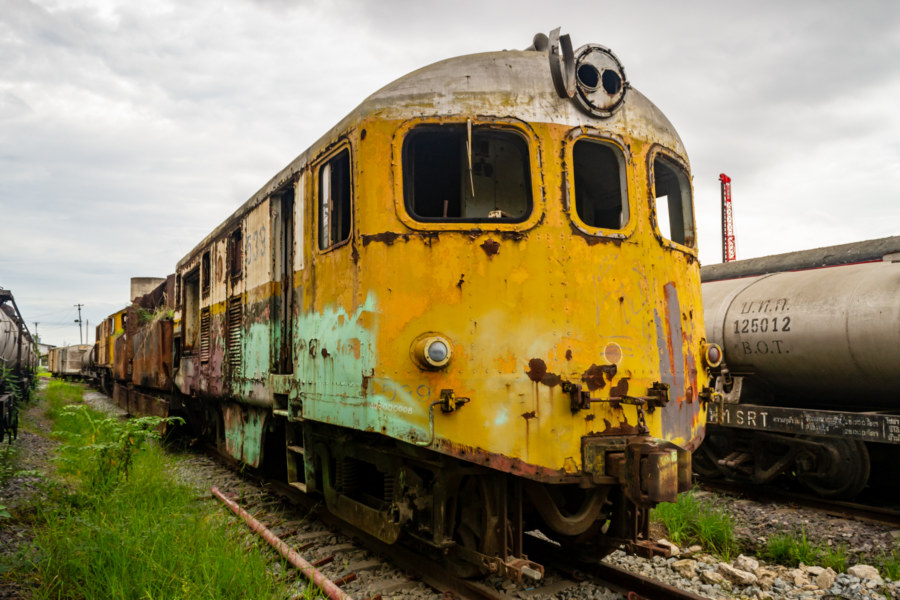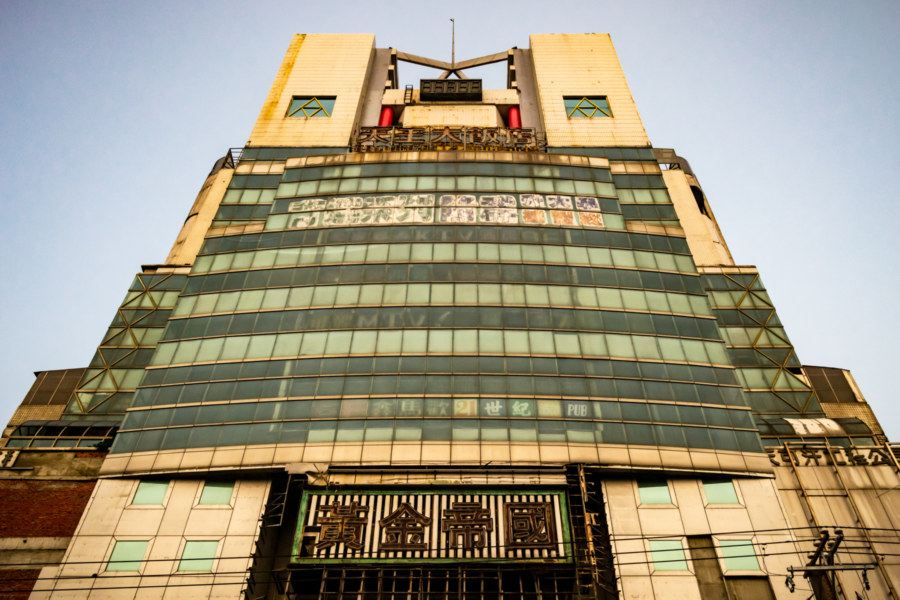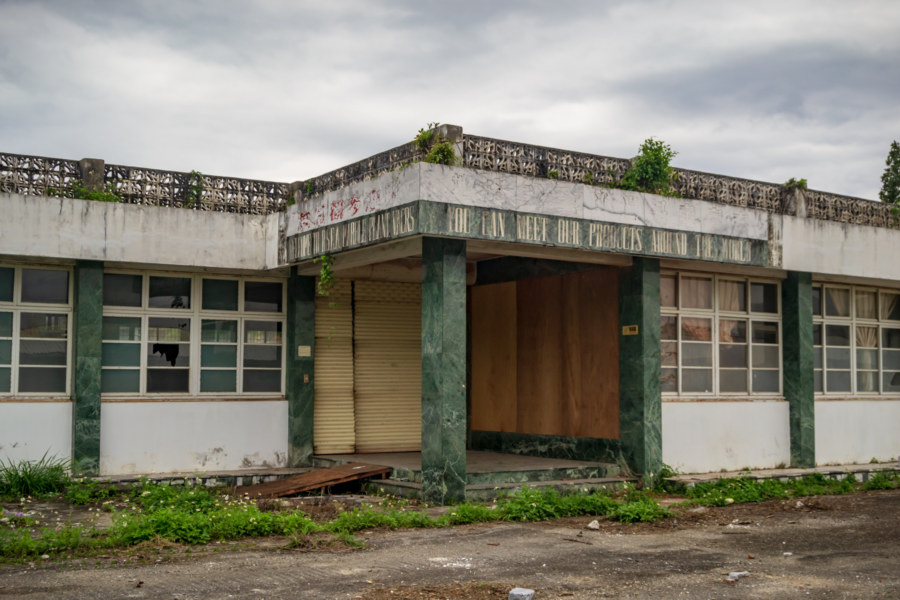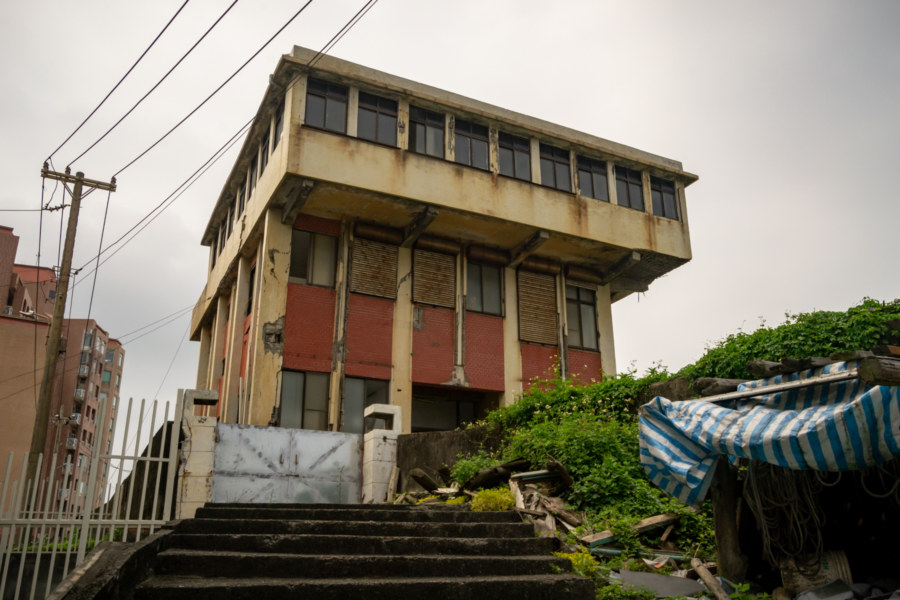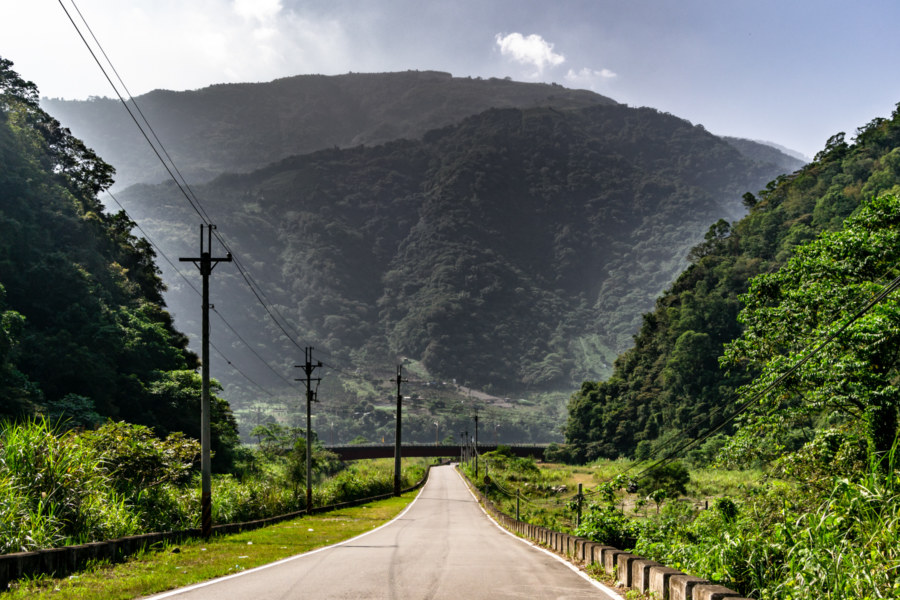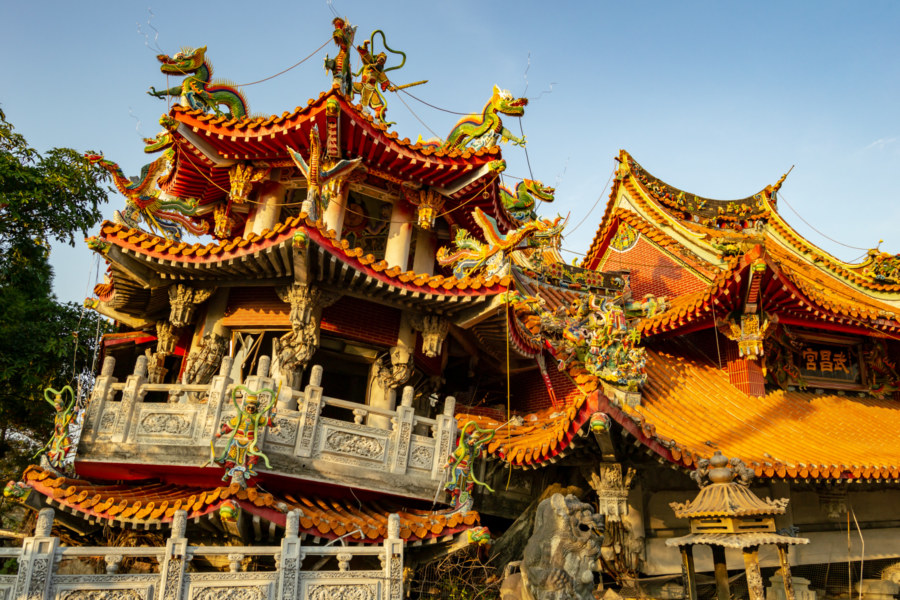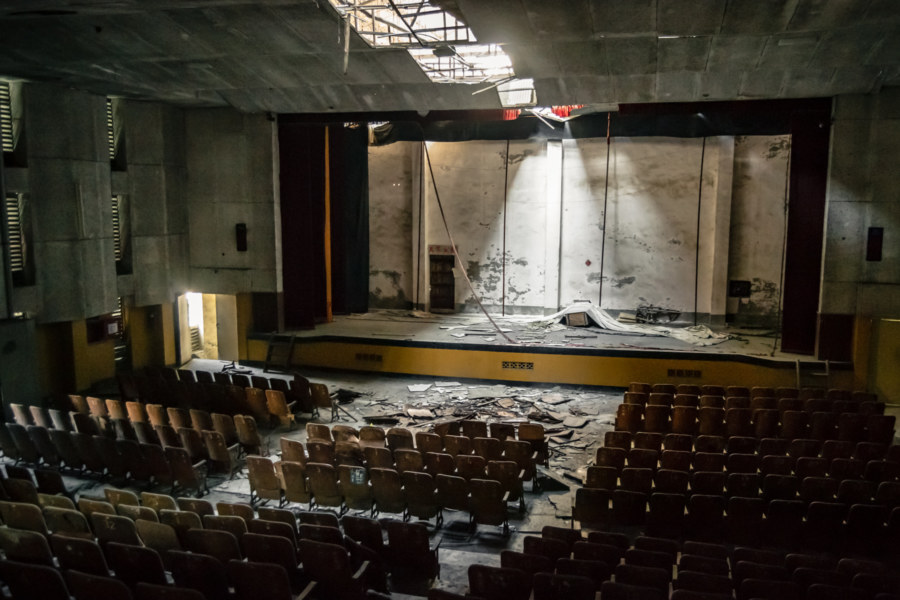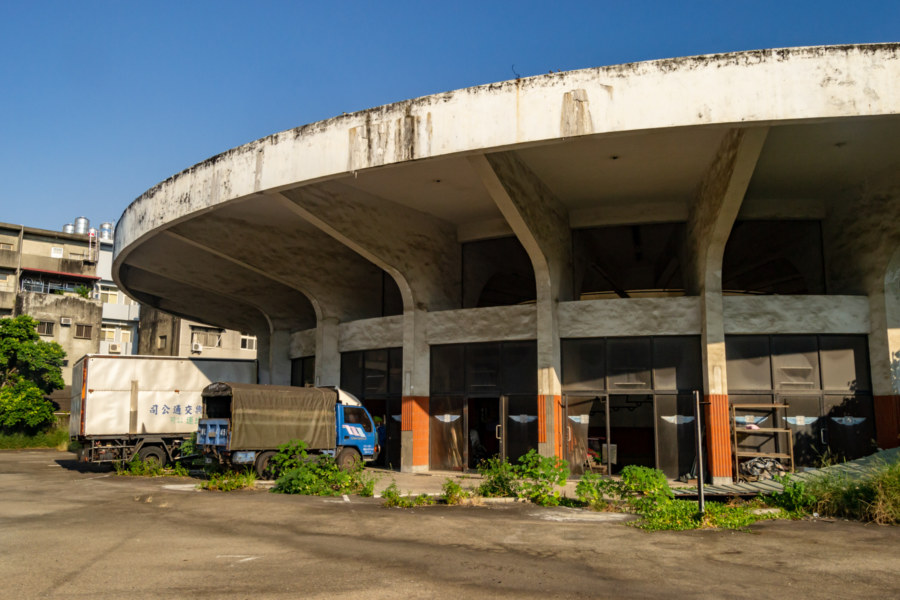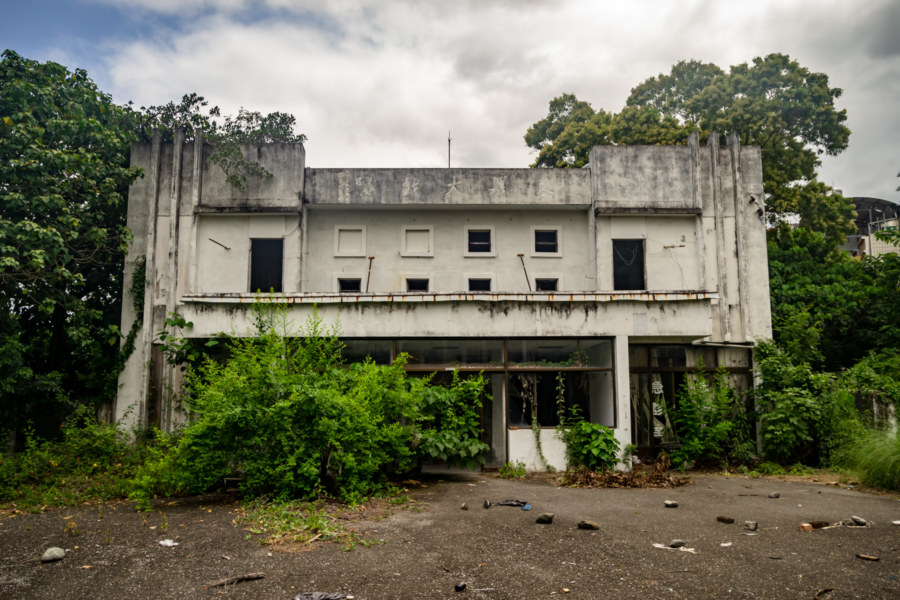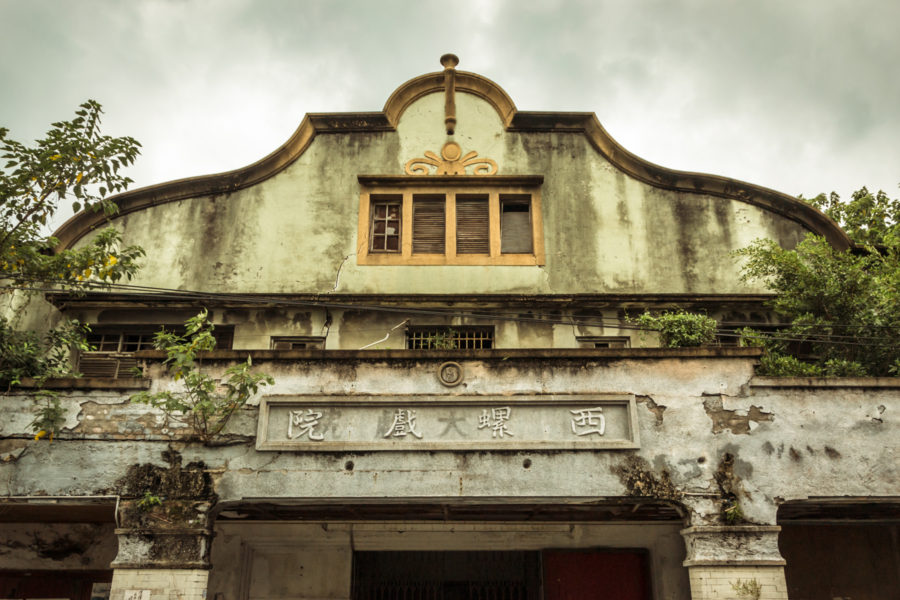Bang Sue Railway Cemetery is located deep within a vast tract of land on the northwest side of Bangkok owned by the State Railway of Thailand. This land is home to Phahonyothin freight yard, the largest in Thailand, as well as numerous maintenance depots, engine shops, and other railway facilities. It is also the future site of Bang Sue Grand Station, set to be the largest railway station in Southeast Asia when construction is completed in the coming years. For decades the train cemetery hidden within these grounds has been known to urban explorers, so I decided to swing by and take a look while visiting in 2019.
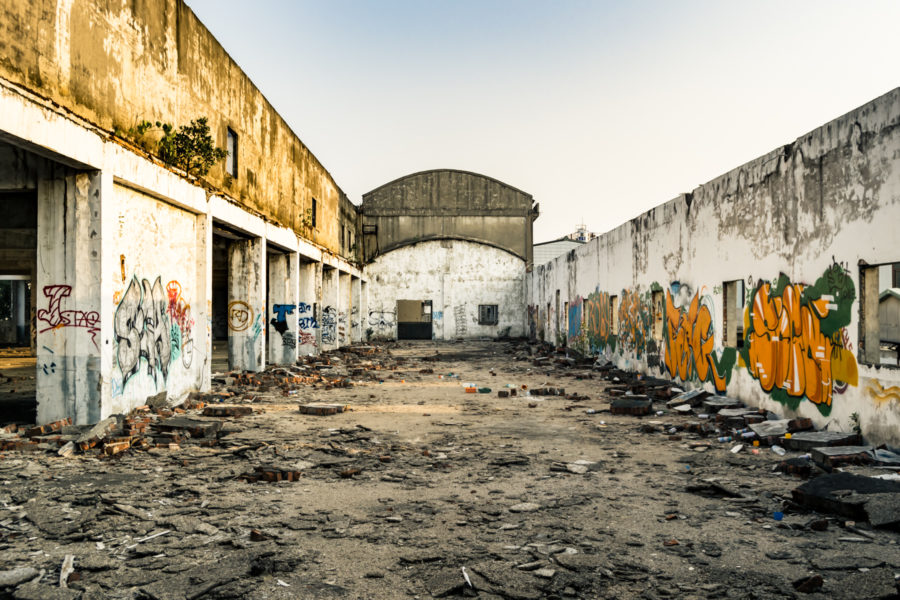
Abandoned buildings and other manmade structures left to the elements. Here I will share the results of various expeditions I have undertaken around the world. See also: urbex, rewilding, and the entire abandoned Taiwan series.
Adjacent Terms
Postcards From Yuanlin 員林明信片
Yuanlin is a modest settlement of approximately 125,000 residents located on the Changhua Plain (彰化平原) in eastern Changhua, Taiwan. It was formerly the most populous urban township in the nation, but Yuanlin was upgraded to a county-controlled city in 2015, second only to the administrative capital, Changhua City. Considerable work has been done in recent years to improve the urban environment of Yuanlin, and it feels like one of the few places between Taichung and Tainan that isn’t falling into disrepair and emptying out. That being said, urban decay remains widespread in Yuanlin, and there are many interesting ruins worth exploring before they disappear. For students of city planning and development this compact city also has quite a lot to offer—and in this post I aim to introduce some of its more intriguing features, mainly drawing upon photographs from 2013 to 2015, when I was spending significant amounts of time in the area.
RSEA Marble Factory 榮民大理石工廠
I chanced upon the ruins of the RSEA Marble Factory (榮民大理石工廠) while riding around the industrial park on the north side of Hualien City sometime in early 2017. It wasn’t immediately obvious what this derelict factory produced so I decided to stop and take a closer look. Although much of this sprawling site had already been cleared, a few half-demolished buildings remained. In one of these I found a pallet full of product samples and several references to marble, answering the first of many questions on my mind. But there’s always more to examine if you’re curious, so let’s dig into the archives and see what can be learned about this abandoned industrial site in Hualien, Taiwan.
Yeliu Signal Station 野柳信號臺
Green Bay is a forlorn stretch of sandy coastline in Wanli, a rural district of roughly 22,000 residents situated on the rugged northeastern coast of Taiwan. It is widely known for its many derelict resorts, most famously the so-called Wanli UFO Village (萬里飛碟屋), which is what initially drew me here in 2013. I returned a year later and noticed a dilapidated structure further along the beach, an unsightly institutional building similar in appearance to a Taiwanese police station of the 1980s. A closer inspection revealed an interior cluttered with intriguing artifacts and decaying documents—enough to conclusively identify this neglected ruin. This was formally known as the Yeliu Signal Station (野柳信號臺), an outpost responsible for monitoring maritime traffic in the shipping lanes and designated anchorages just west of the Port of Keelung.
Nantou Road Trip 2015: Sun Moon Lake to Taichung
This post is the final entry in a series documenting several days of riding around Nantou in October 2015. On the last morning of this trip I woke in Puli, close to the geographic center of Taiwan. I only had to return the scooter to the rental shop in Taichung sometime after nightfall so I decided to take a more circuitous route and check out many sights along the way. After a quick breakfast I headed south, briefly stopping by the shores of the majestic Sun Moon Lake (日月潭, covered in the previous entry in this series), and ascended a winding mountain access road leading into Xinyi, one of several majority Taiwanese Indigenous districts in this landlocked county.
Jiji Wuchang Temple 集集武昌宫
Wǔchāng Temple 武昌宮 is one of many remnants of the devastating 921 Earthquake, which ripped through central Taiwan on September 21st, 1999, toppling tens of thousands of buildings and claiming nearly 2,500 lives. Located in the rural township of Jiji in Nantou, less than five kilometers from the epicenter of the magnitude 7 quake, this temple was destroyed mere months after it was completed. Rather than clear the debris, the damaged structure was left more or less as it was the morning after it collapsed, and a new temple with the same name was built in front. Nowadays this ruined temple is a popular roadside attraction and a prime example of disaster tourism in Taiwan.
Guanmiao Zhongyang Theater 關廟中央戲院
Zhōngyāng Theater (中央戲院) is located in Guanmiao, a rural district in southern Tainan home to slightly less than 35,000 residents. The name is derived from a nearby street and simply means Central Theater. It was constructed in 1969, a few short years after an open-air movie theater began showing films on this plot of land just east of the biggest market in town. As with many Taiwanese cinemas of its vintage, it was in business until the late 1980s before winding down, another casualty of changing consumer habits, the collapse of local industry, and rural flight. This year marks the 50th anniversary of Zhongyang Theater, a milestone recently observed by Guanmiao Youth (關廟青), a group of local activists hoping to revitalize their hometown. They were successful in generating some some positive news coverage of the occasion, and now that this theater is in the news, I figure I may as well share my findings from several visits to the site over the last four years.
Changhua Bus Terminal 台汽客運彰化總站
Taiwan Motor Transport Company 台灣汽車客運公司 (or simply Táiqì 台汽) was a state-owned enterprise founded in 1980, partly to take advantage of the newly-completed National Freeway 1 國道一號 running along the western coast of Taiwan from Keelung to Kaohsiung. Considerable investments were made into an extensive fleet of vehicles, more than two dozen bus stations, and a massive maintenance depot (previously documented on this blog). Despite enjoying a monopoly on long distance, intercity coach travel, the company struggled to remain profitable in its first decade of operations—and when the market was deregulated and opened to competition in the early 1990s, its fate was sealed. After incurring another decade of losses Taiqi was privatized in 2001 under the name Kuo-Kuang Motor Transport Company 國光汽車客運股份有限公司, which continues to operate today, albeit on a much smaller scale. One consequence of the downsizing that preceded privatization was the closure of the Changhua Bus Terminal in Changhua City, the administrative capital of Changhua. Today it remains derelict, a crumbling relic of the optimistic 1980s hidden in the laneways north of the central railway station.
Dongxing Theater 東興大戲院
Dōngxìng Theater (東興大戲院) is located in a small village in the outskirts of Taitung City, Taitung, at the southernmost extent of the Huadong Valley (花東縱谷). Not much is known about its history beyond whatever can be deduced by visiting the site, but it was almost certainly built in the late 1960s, around the same time as Jinxing Theater, located just down the street, and Zhonghua Theater in Guanshan, which has almost the same design. At some point it went out of business, probably in the 1980s, and was converted into a small rural hospital, a repurposing I’ve seen nowhere else in Taiwan.
Xiluo Theater 西螺大戲院
Xiluo Theater (西螺大戲院) is perhaps the most widely-known of the many abandoned theaters of Taiwan. It is located just off the main commercial street running through Xiluo, a small city of approximately 46,000 residents on the south bank of the Zhuóshuǐ River (濁水溪), the traditional boundary dividing northern and southern Taiwan. Completed sometime between 1937 and 1940, this reinforced concrete and brick building replaced a wooden theater originally built in the 1920s. The new theater survived the war unscathed and flourished during the golden age of Taiwanese cinema in the 1950s and 60s. In those days the area surrounding the theater became known as Xiluo’s Xīméntīng (西門町), a name derived from Taipei’s popular entertainment district. Business declined sharply in the early 1980s and the theater was abandoned to the elements by 1988, a consequence of changing consumer habits, the rise of television and home video, and population outflow to larger cities. More recently it has become a popular site for photography, video production, urban exploration, and historical tourism.
